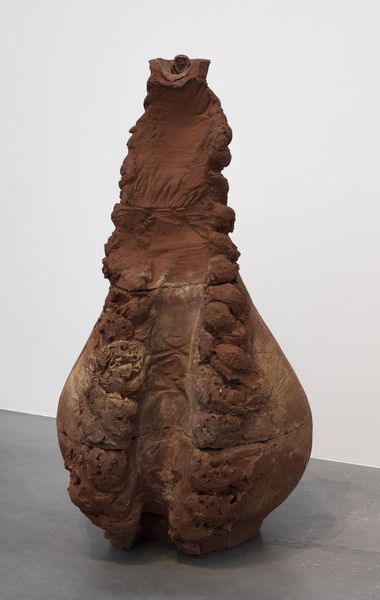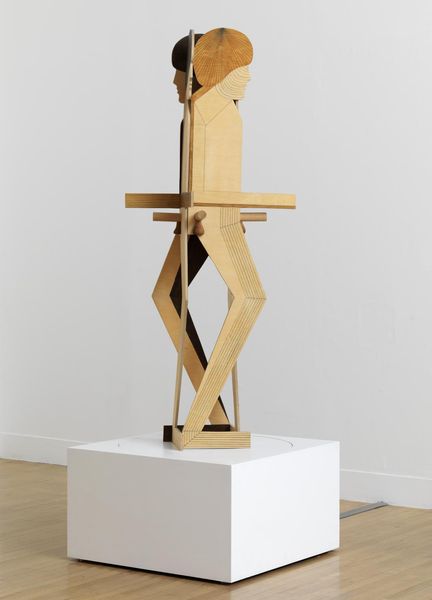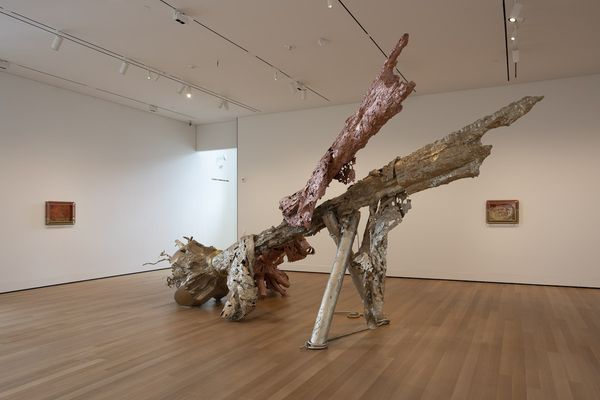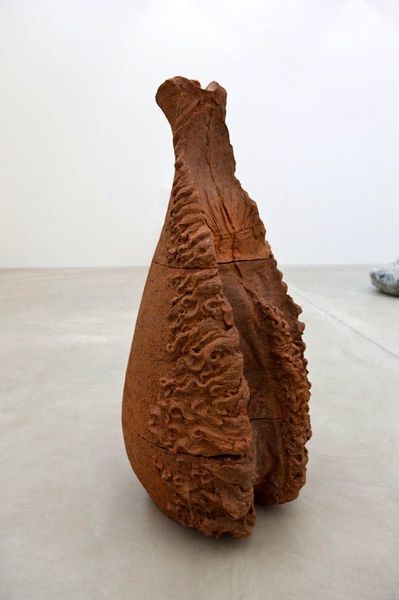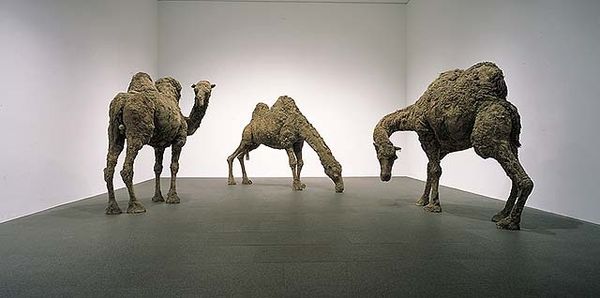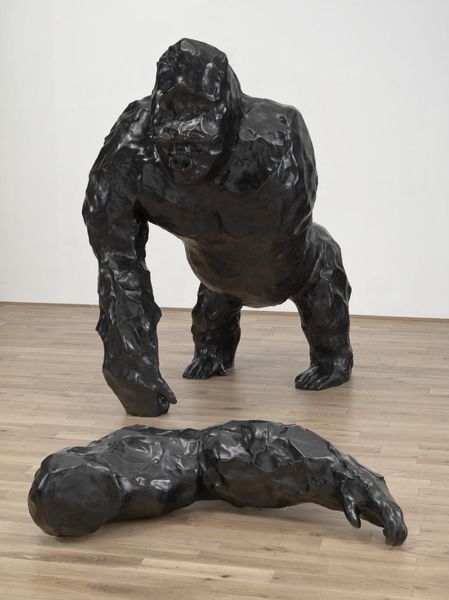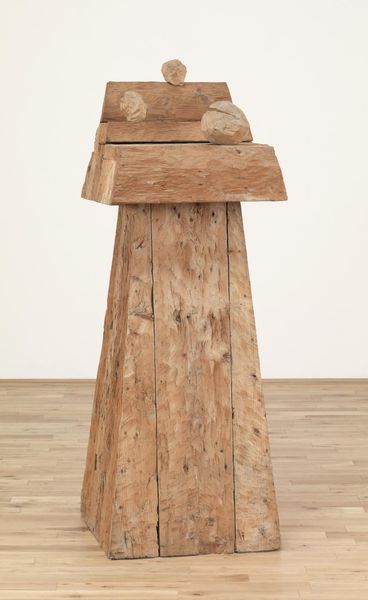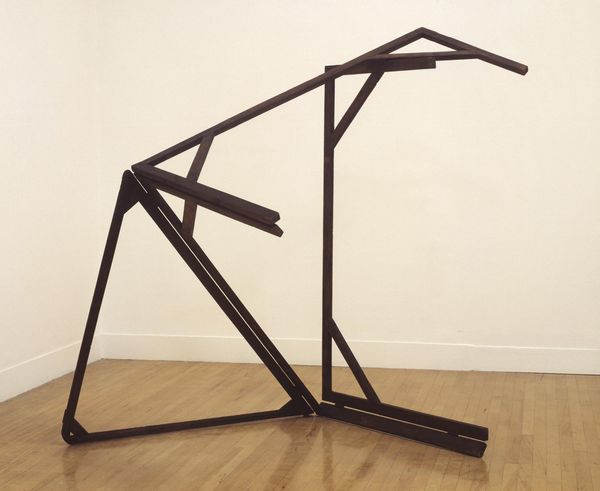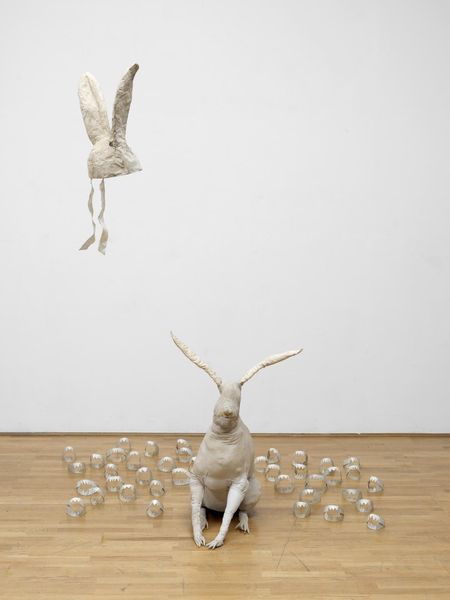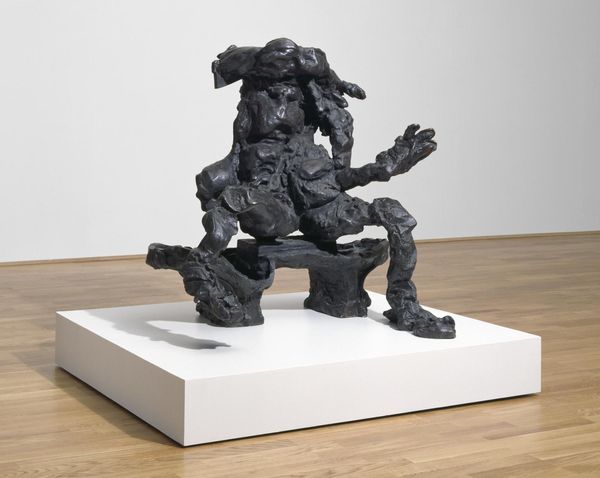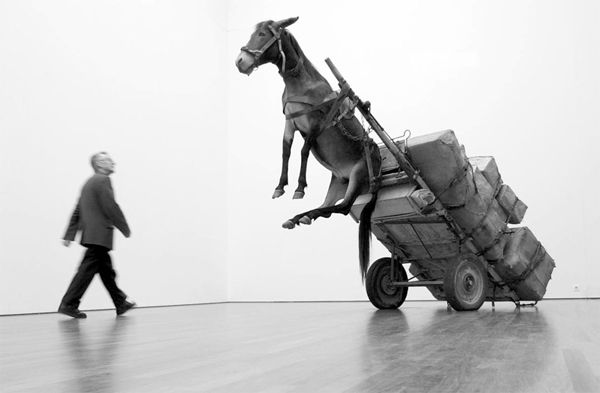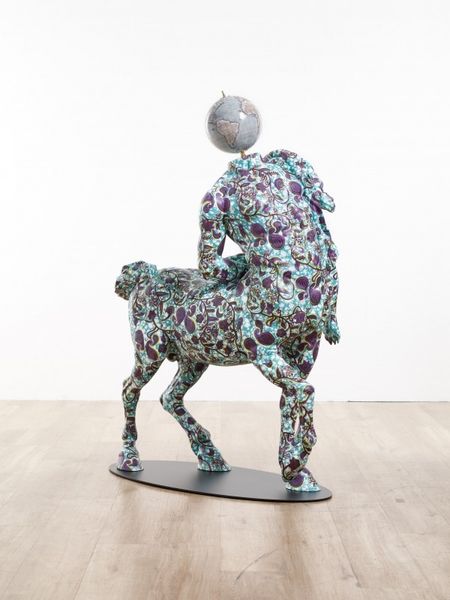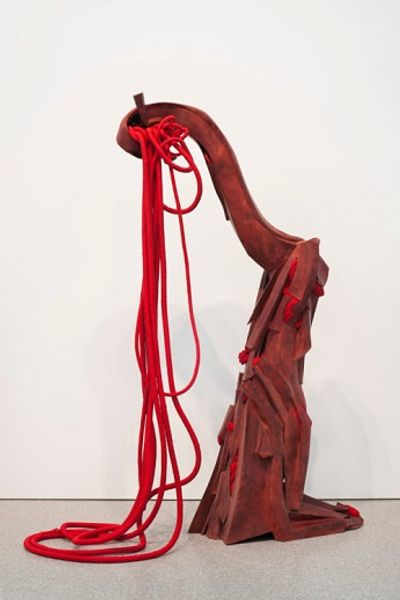
Dimensions: unconfirmed: 1750 x 3000 x 850 mm
Copyright: © Laura Ford | CC-BY-NC-ND 4.0 DEED, Photo: Tate
Curator: Laura Ford's "Moose" stands before us, a substantial sculpture at almost two meters tall and three meters wide, currently part of the Tate Collections. What strikes you first about it? Editor: There's a poignant sadness, almost a vulnerability, despite its size. It's like a discarded toy, or maybe a very, very lost soul. Curator: Exactly! Ford's work often explores the intersection of childhood innocence and darker, more complex realities through her choice of materials like textiles which give it a soft, almost huggable appearance, in sharp contrast to its unsettling presence. Editor: The juxtaposition is brilliant. The domesticity of the materials – the blanket, the clothing – against the wildness of the moose form creates a really unsettling tension. It's both familiar and deeply strange. Curator: It makes us think about the manufacturing process of creating the materials and labor involved, contrasting mass production and handcraft. Editor: It’s like a comforting object, yet with an underlying story of anxiety. Thanks, that's given me something new to ponder. Curator: Indeed, a tangible story made of the ordinary.
Comments
Join the conversation
Join millions of artists and users on Artera today and experience the ultimate creative platform.
tate 8 months ago
⋮
Moose is one of a series of sculptures of animals made by Ford in the late 1990s. Some of these sculptures, like Moose, are over life-size representations of four-legged animals. Others, like Elephant Boy (1998), are child-sized anthropomorphic hybrids which look like children costumed as animals. Ford grew up on a fairground and then on an old farm, which had previously been a zoo, in Cardiff. She remembers lots of animal stories from this time. More recently she has made many visits to London Zoo with her two small children. She thinks of her animal sculptures as 'sculptures dressed up as animals which are dressed up as people' (unpublished conversation with the author, 23 March 2000). Covered in fabrics, the sculptures have a deceptively soft, stuffed appearance. They are in fact extremely hard. Ford makes an armature out of a combination of scaffolding poles, chicken wire and plaster, which she covers with fabric, sometimes using wadding to enhance the forms. Several layers of fabric suggest garments. The layer of grey blanket covering the body of Moose ends at the tops of its legs, evoking human qualities. Ford is interested in ambiguities in the dynamics of looking, which involve pleasure as well as possible threat and fear of invasion. In the early 1990s she made several works which suggest a complicity in looking between the viewer and the subject being looked at. It is significant that her animal sculptures are all blind; fabric covers their faces and features are largely absent. Ford believes that this allows the viewer to look at them. She has said 'without the eyes and without the face … somehow they have the possibility of being real to me … they're more alive being smothered somehow' (unpublished conversation with the author, 23 March 2000). The sculptures represent emotional states with a wide range of ambiguities. The fabrics suggest softness, cosiness and domesticity. The felt-like blanket covering Moose recalls the work of the German artist Joseph Beuys (1921-86), for whom felt was an important material symbolising protection and insulation. The sculpture's lack of eyes gives it an introverted quality, which for the artist is connected to a sense of being trapped, albeit willingly, in domestic situations. Moose combines gentleness and comfort with an uncanny blankness, providing a vehicle for the projection of the viewer's imagination. Further reading:A Stranger Here Myself: Laura Ford and Jacqueline Poncelet, exhibition catalogue, Camden Arts Centre, 1998, reproduced (colour) [p.22]New Art from Britain, exhibition catalogue, Kunstraum Innsbruck, Innsbruck 1998, pp.20-3British Art Show 5, exhibition catalogue, National Touring Exhibitions, 2000, pp.56-7 Elizabeth Manchester April 2001
